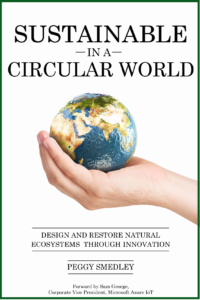There is no doubt that connected devices and technologies are transforming how humans and machines work together in places like operating rooms, factories, and roadways/intersections. Increasingly, AVs (autonomous vehicles) paired with smarter infrastructure is paving the way for safer roadways, which leads to fewer transportation-related fatalities. According to Allied Market Research, the global autonomous vehicle market will reach $2,161.79 billion by 2030, up from $76.13 billion in 2020 and representing a CAGR (compound annual growth rate) of 40.1% between 2021 and 2030. Part of this market growth will be thanks to advancements in cellular technologies.
Last week, Cisco and Verizon announced a successful POC (proof-of-concept) demo in Las Vegas that will help bring applications like robotaxis and autonomous delivery bots to more people and more places in the near future. Cisco says in the past, autonomous features have relied on roadside radios that extend vehicles’ low-latency communication signals to each other and to the infrastructure. However, the Verizon/Cisco POC in Las Vegas has proved there is another way.
Using Verizon’s LTE (long-term evolution) network, public 5G edge with AWS Wavelength, and Cisco Catalyst IR1101 routers in connected infrastructure, the companies say they were able to meet the latency thresholds required for autonomous driving applications in their proof of concept. To get there, the companies virtualized the role of those expensive roadside radios using LTE and edge compute. Compared to the traditional method, this setup is likely to result in better efficiency, reduced cost, and improved scalability. Cisco’s lead transportation solutions architect Mark Knellinger says the implications of the demo are huge for roadway operators in that “it relieves them of the massive expense of deploying and operating a dedicated V2X (vehicle-to-everything) environment.”
In another example of how cellular technology is helping to bring about the next era in transportation, Peachtree Corners—home to the Curiosity Lab, a 5G-enabled AV and smart-city living laboratory near Atlanta, Ga.—recently announced a smart infrastructure app for residents that will leverage 5G technology. 5G-powered traffic signals on T-Mobile’s network will communicate key traffic signal data to vehicles traveling on roads via the TravelSafely smartphone app. Users will be able to receive audible warnings about potential red light running and alerts to “get ready for green” on smartphones and vehicles with onboard units equipped with the app.
The solution is the result of a collaborative partnership between the Curiosity Lab at Peachtree Corners and the iATL (Infrastructure Automotive Technology Laboratory)—an engineering technical facility that develops and tests connected vehicle applications. The partnership’s goal is to prod development and deployment of connected vehicle safety applications and transportation infrastructure technologies. Peachtree Corners says the deployment will have ramifications beyond just the messages sent to drivers and their vehicles in Peachtree Corners. It will help developers and operators more fully understand how a 5G network can be used to deliver traffic-related safety messages to drivers and their vehicles, which could lead to the development of additional solutions that help address traffic safety issues—a key pain point for cities everywhere.
Want to tweet about this article? Use hashtags #IoT #sustainability #AI #5G #cloud #edge #digitaltransformation #machinelearning #infrastructure #bigdata #cellular #LTE #4G #Cisco #Verizon #PeachtreeCorners #CuriosityLab #AV #autonomousvehicles #V2X #smartphone #smartcity #connectedcar #trafficsafety #TMobile #iATL


